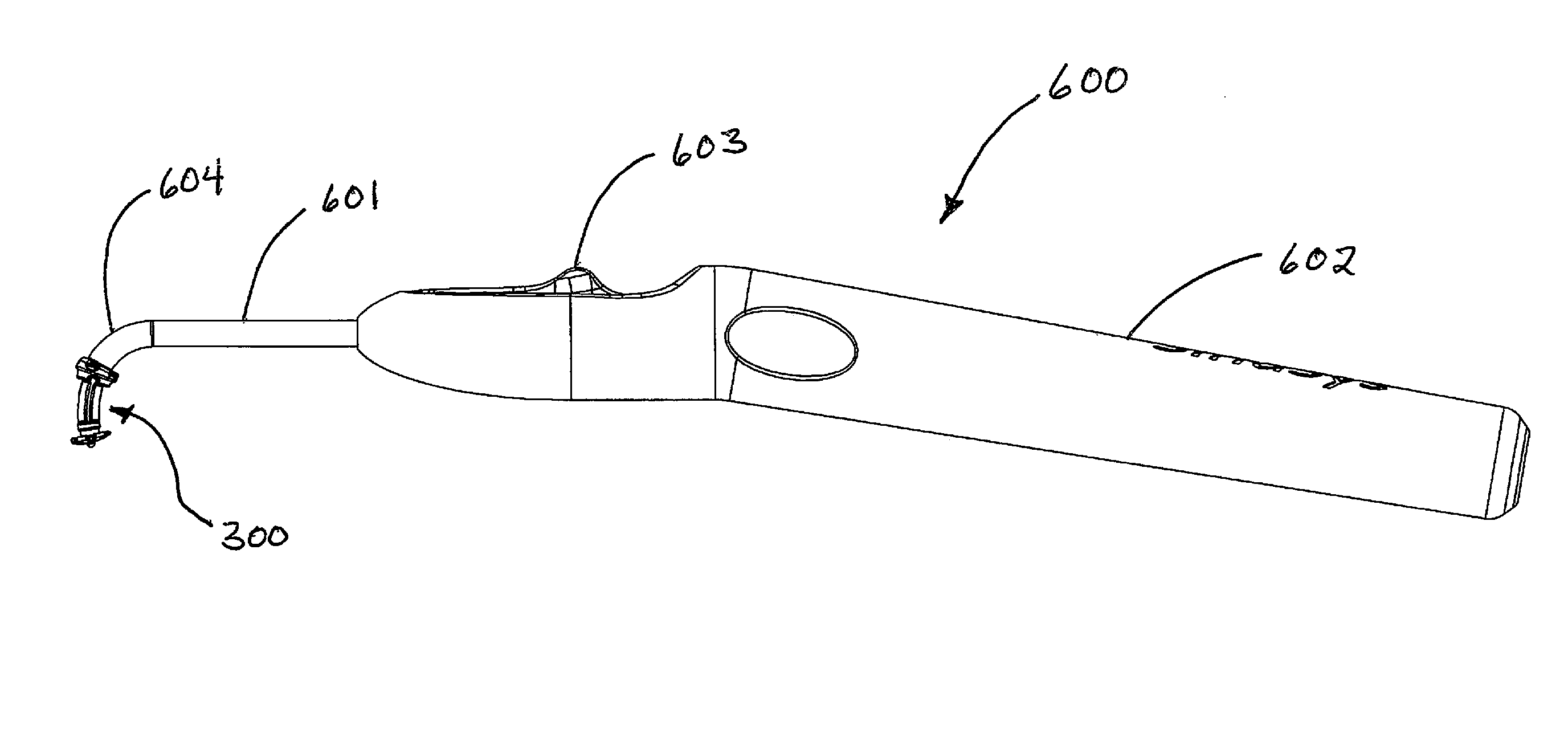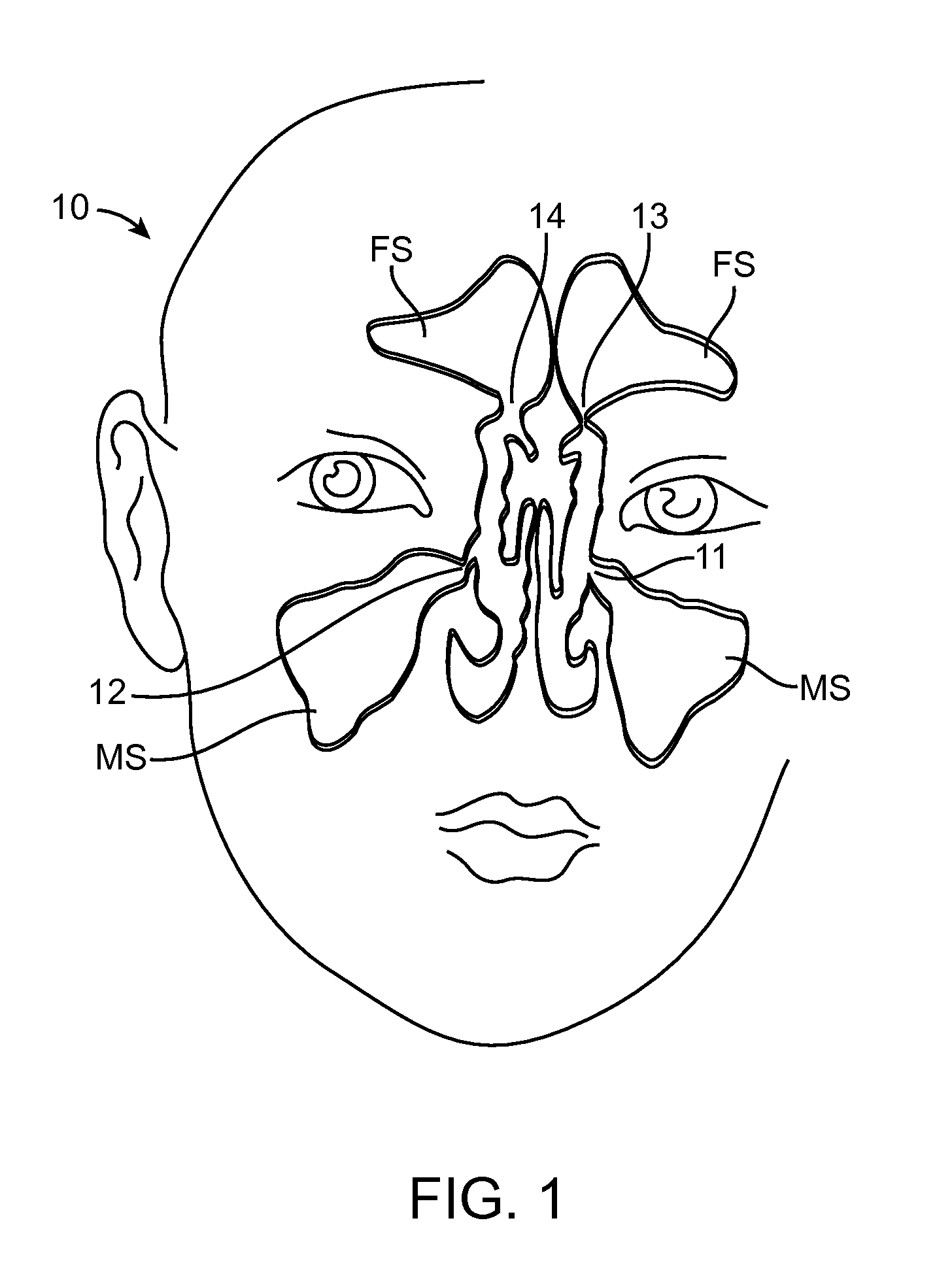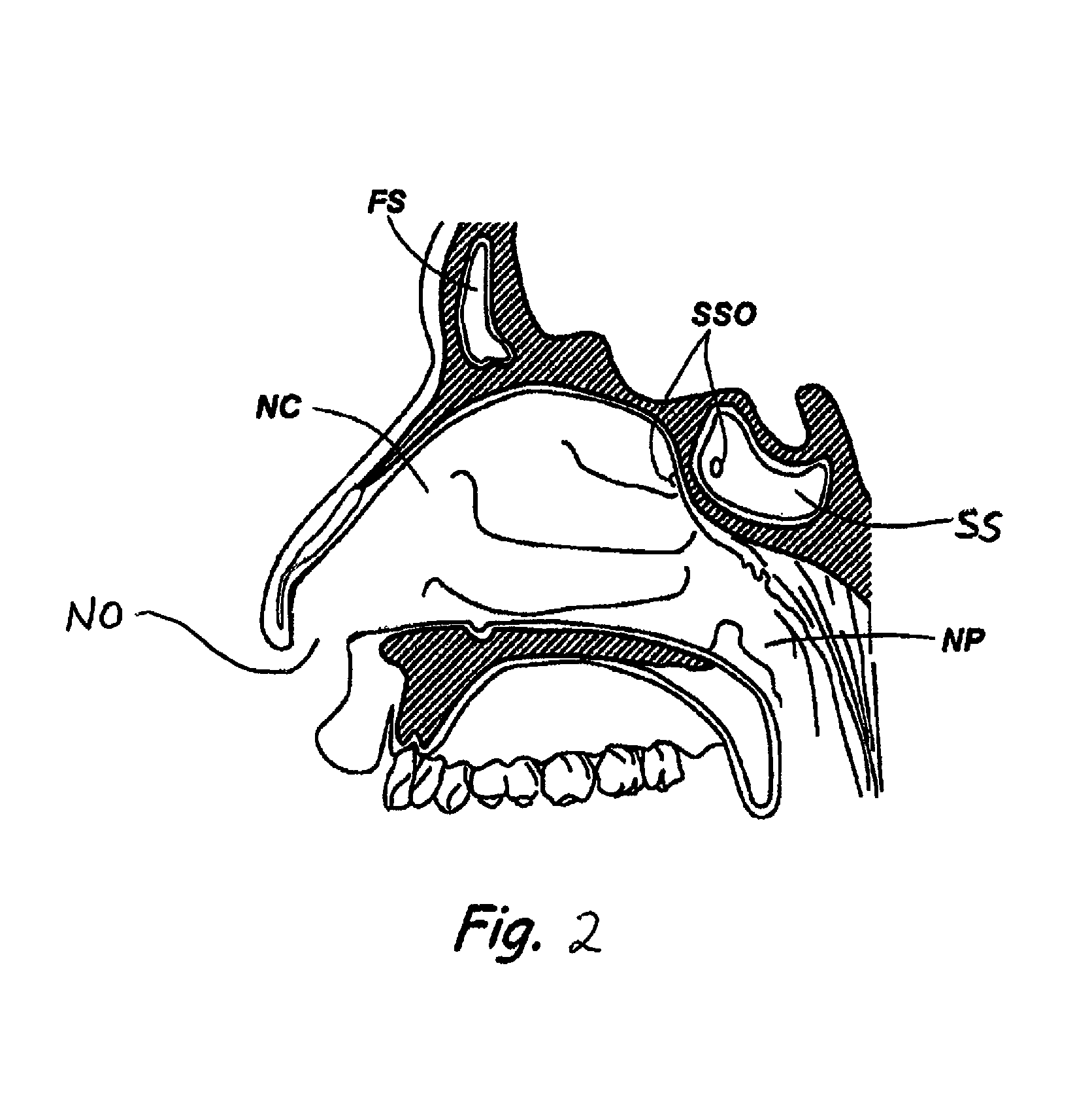Devices and methods for inserting a sinus dilator
a sinus dilator and device technology, applied in the field of sinus dilators, can solve the problems of damage to the epithelium that lines the sinus, blocked passageways of the paranasal sinuses, and congestion of the mucosal sinuses, and achieve the effect of limiting bleeding
- Summary
- Abstract
- Description
- Claims
- Application Information
AI Technical Summary
Benefits of technology
Problems solved by technology
Method used
Image
Examples
Embodiment Construction
Devices
[0065]FIGS. 1 and 2 illustrate a human patient's nose and sinuses, which may assist in the following description. Referring now to FIG. 1, there is shown a human patient 10 having two frontal sinuses (FS) and two maxillary sinuses (MS). Each of these four sinuses has an opening which can be accessed by way of the patient's nasal cavity. The openings include maxillary sinus openings 11 and 12, of which opening 11 is shown in a normal open condition and opening 12 shown in an occluded or stenotic condition. Similarly, the patient 10 has frontal sinus openings 13 and 14, of which opening 14 is shown in a normal open condition and opening 13 is shown in an occluded or stenotic condition. Referring now to FIG. 2, there is shown a sectional view of a patient's nose and sinuses including the nasal cavity (NC), the nasospharynx (NP), the nasal cavity opening (NO), the frontal sinus (FS), the sphenoid sinus (SS) and the sphenoid sinus opening (SSO).
[0066]Aspects of the present disclos...
PUM
 Login to View More
Login to View More Abstract
Description
Claims
Application Information
 Login to View More
Login to View More - R&D
- Intellectual Property
- Life Sciences
- Materials
- Tech Scout
- Unparalleled Data Quality
- Higher Quality Content
- 60% Fewer Hallucinations
Browse by: Latest US Patents, China's latest patents, Technical Efficacy Thesaurus, Application Domain, Technology Topic, Popular Technical Reports.
© 2025 PatSnap. All rights reserved.Legal|Privacy policy|Modern Slavery Act Transparency Statement|Sitemap|About US| Contact US: help@patsnap.com



